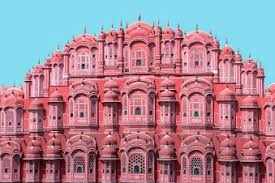Chittorgarh News Desk Located within the historic fort of Chittorgarh in the vibrant Indian state of Rajasthan, the Vijay Stambh, or Victory Tower, is a towering testament to Rajput valor and victory. A symbol of victory and glory, this building not only symbolizes a significant military success but also encapsulates the rich cultural and architectural heritage of medieval India. This article highlights the history and significance of the Vijay Stambh, exploring the circumstances of its construction and its enduring legacy in the tapestry of Indian history.
origin of the pillar
The origins of Vijay Stambh can be traced back to the turbulent times of the early 15th century, a time when the Rajput ethos of bravery, honor and chivalry was at its peak. The pillar was conceived as a memorial monument by Maharana Kumbha (Rana Kumbha), a patron of the arts and a formidable warrior, who ruled the state of Mewar with Chittorgarh as his capital. The Vijay Stambh was built in 1448 under Mahmud Khilji. It was started after the great victory of Maharana Kumbha over the combined forces of Malwa and Gujarat under the leadership of Maharana Kumbha. This victory was not only a military achievement but also a morale booster for the Rajputana region, strengthening the sovereignty and resilience of Mewar against the invading armies.
architectural marvel
Construction of the Victory Column began soon after the conquest and took about ten years to complete, with its inauguration in 1448. The tower reaches a height of 37.19 meters (about 122 feet) and is decorated with intricate carvings and inscriptions, which reflect. The architectural and artistic sensibilities of the time. Built of red sandstone and white marble, the nine-storey structure has an intricate geometric plan and is replete with an abundance of Hindu deities, reflecting the deep religious fervor of that era. The tower is famous for its elaborate sculptures that depict great Depicts stories from the epics, Ramayana and Mahabharata, as well as various incarnations of Vishnu and other mythological subjects. The inscriptions in and around the tower are in various scripts, including Nagari and Persian, reflecting the diverse cultural influences of the period.
Symbolism and significance
The Vijay Stambh stands not only as a physical manifestation of a historic victory but also as a symbol of Rajput pride and spirituality. Each floor of the tower was purposefully designed to represent a different aspect of the kingdom – military prowess, religious piety and cultural richness. The top floor offers a panoramic view of Chittorgarh, a reminder of the strategic importance of the place and the vigilance required for its security. The tower also served as a vantage point from which to keep an eye on the surrounding area. In times of peace, it served as a royal burial ground, whose shadow probably fell on the Bhimalat Kund, a sacred water body, at the time of the summer solstice.
cultural heritage
The Victory Column is more than a monument; It is an enduring legacy of Rajputana culture that continues to inspire and amaze visitors from all over the world. It has become an iconic feature of Rajasthani tourism, encapsulating the historical narrative and architectural grandeur of the state. Over the centuries, the Victory Tower has withstood the ravages of time, natural disasters and war sieges. It is a stark reminder of the historical resilience of the Rajputs and their indomitable spirit in the face of adversity.
Pillar in literature and art
Throughout history, the Vijay Stambh has been praised in Rajasthani folklore, poetry and ballads. It has also been depicted in various forms of art, from miniature paintings to contemporary graphic depictions. In literature, it often serves as a backdrop to tales of chivalry and romance, echoing the heroic spirit of its creators.
conservation efforts
The importance of conservation of the Victory Column has not diminished with time. Conservation efforts are ongoing to maintain the structure and its intricate artwork. The Archaeological Survey of India recognizes the tower as a national monument and has initiated several projects to protect and restore it for future generations to appreciate.
conclusion
The Vijay Stambh of Chittorgarh is not just a grand structure of stone; It is a history of courage, faith and artistic skill of that time. As it stands before the skyline of Chittorgarh, it continues to narrate the story of Maharana Kumbha’s victory and the indomitable spirit of the Rajputs. It serves as a beacon of inspiration, a symbol of past glory and a tribute to artistry and foresight.


